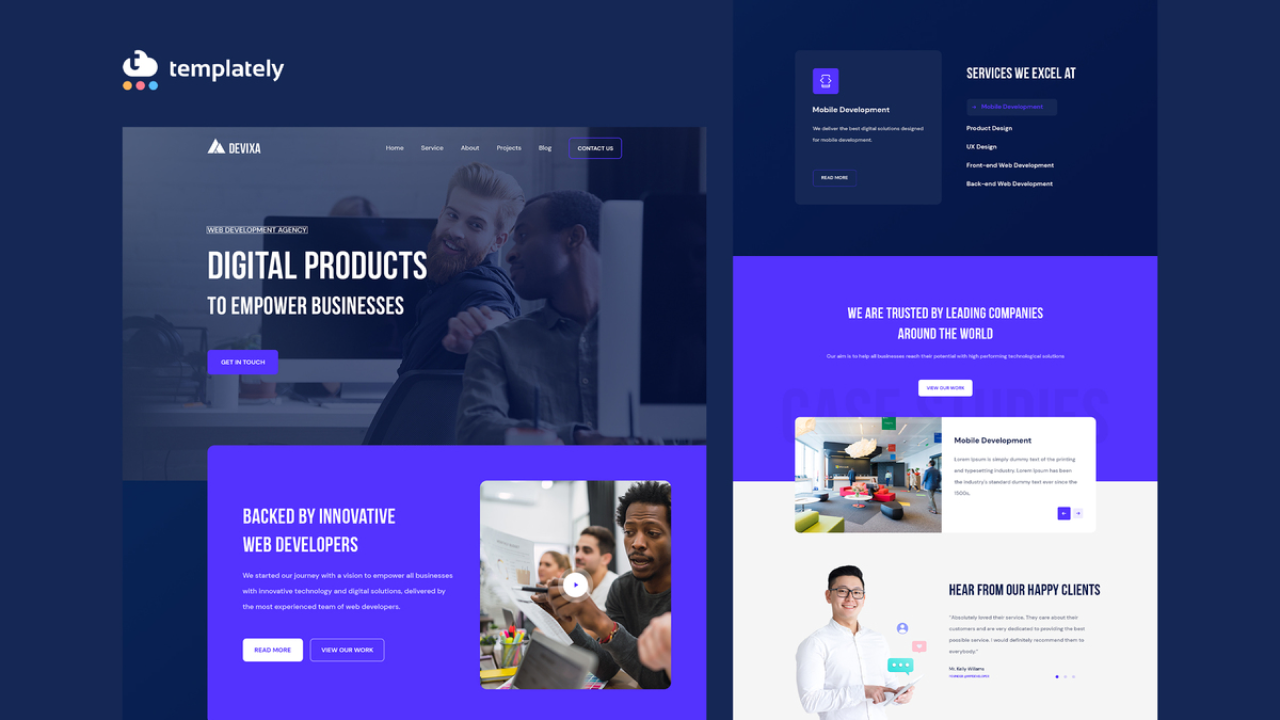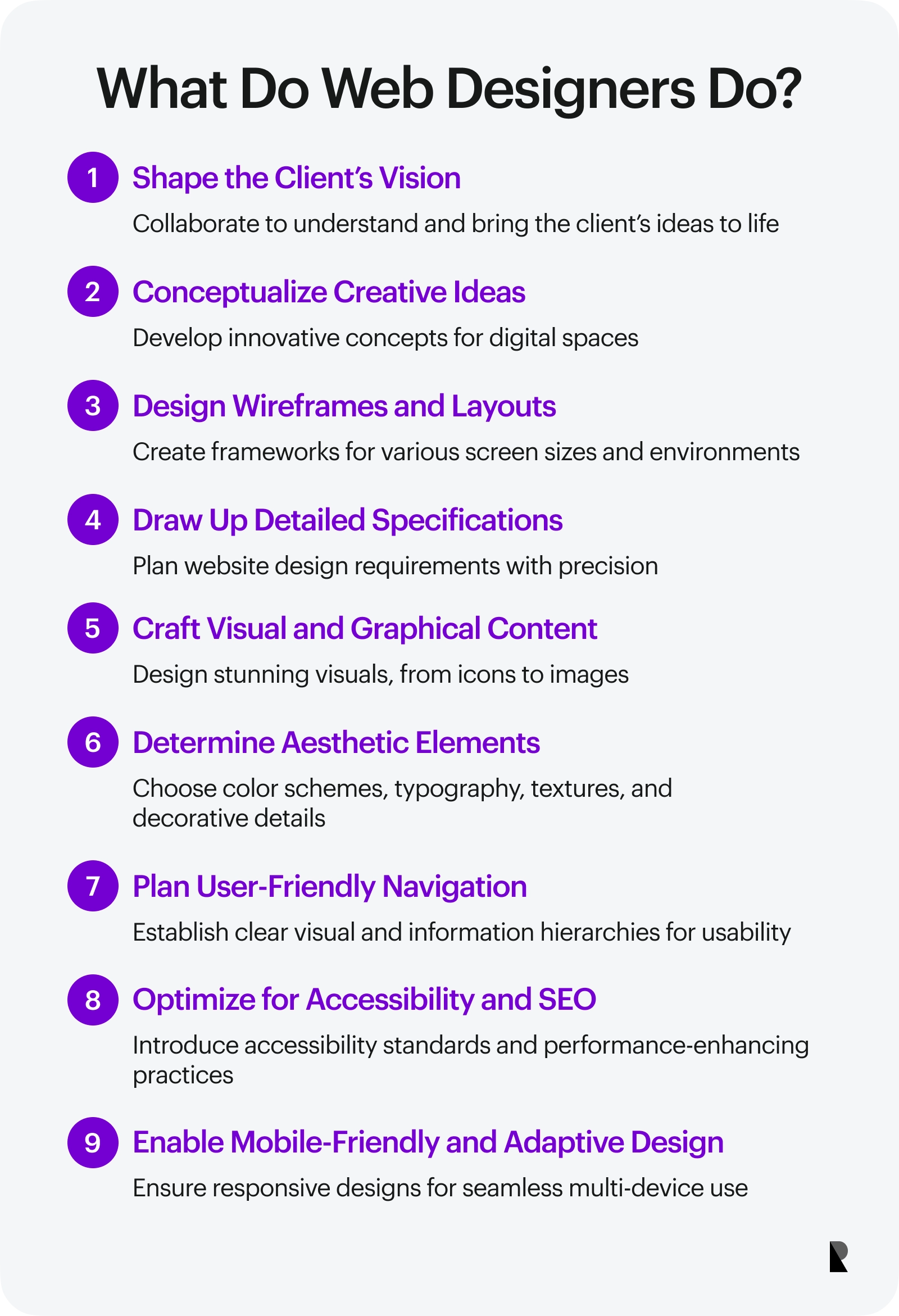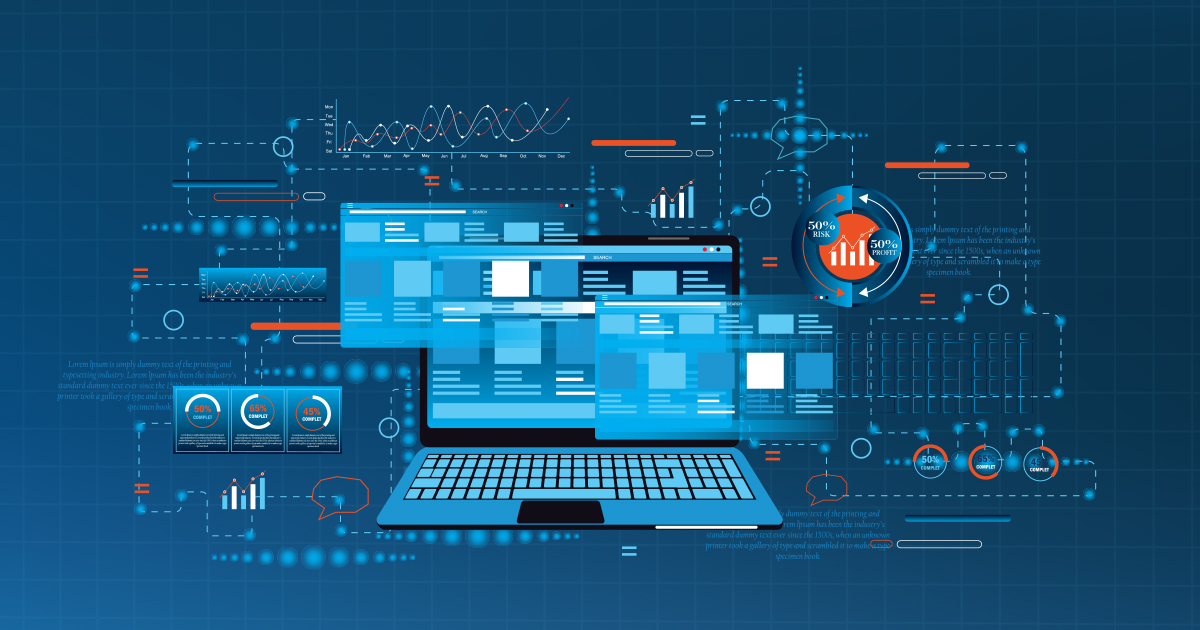Website development solutions that enhance overall user satisfaction
Discovering the Different Kinds Of Web Style and Their Unique Benefits
The landscape of website design encompasses a range of styles, each offering unique advantages that satisfy various customer needs. Minimalist and flat styles emphasize quality, while receptive and worldly styles enhance convenience across tools. Illustrative and typography-driven strategies intend to increase interaction and emotional vibration. Recognizing these varied types can significantly affect customer experience and brand perception. What exists under the surface area of these design choices?
Minimalist Web Design

Minimalist website design frequently incorporates a limited color combination and uncomplicated typography, which not just enhances aesthetic appeals yet likewise reinforces brand identity. The minimized intricacy can bring about much faster loading times, even more improving user contentment. Additionally, by reducing visual clutter, individuals can engage with content better, leading to boosted understanding and retention. On the whole, minimal website design promotes a smooth user experience, making it a popular choice for brand names aiming to convey clarity and professionalism in their on-line existence.
Responsive Website Design
Receptive Web style has actually become essential in today's electronic landscape, making certain mobile compatibility for customers across various gadgets. This approach greatly boosts user experience by offering seamless navigation and access, despite display size. As more people access the Web on mobile phones and tablets, the value of receptive design continues to expand.

Mobile Compatibility Significance
As mobile phone use proceeds to rise, ensuring web sites work with various screen dimensions has ended up being vital for reliable communication and interaction. Mobile compatibility, commonly accomplished with receptive website design, permits websites to adjust seamlessly to smartphones, tablets, and other tools. This flexibility not just reaches a more comprehensive target market yet additionally enhances brand reputation. A site that works well on mobile phones shows professionalism and trust and focus to user needs. Furthermore, internet search engine focus on mobile-friendly websites in their positions, making compatibility an essential aspect for on the internet presence. By purchasing mobile compatibility, companies can enhance their digital existence and deal with the growing variety of individuals who access information on the move. Consequently, focusing on mobile-responsive layout is essential in today's electronic landscape.
Improved User Experience

Apartment Style
Level design is a minimalist method to website design that highlights simpleness and clarity. By eliminating three-dimensional aspects such as slopes, structures, and shadows, flat design develops an aesthetically enticing interface that focuses on content and functionality. This style advertises an intuitive navigation experience, as customers can rapidly determine key attributes and actions without distraction.
Among the primary benefits of level layout is its responsiveness across various devices and display dimensions. Its tidy lines and uncomplicated layouts adapt perfectly, guaranteeing a regular experience for users on mobile, tablet, or desktop systems. Furthermore, level layout usually incorporates strong shades and typography, improving aesthetic effect and brand name recognition.
Moreover, the simpleness intrinsic in flat layout results in much faster loading times, which adds positively to individual complete satisfaction - web design. In general, flat design stays a preferred option for contemporary Web growth, lining up with modern aesthetic choices while supplying excellent use
Material Style
Material Layout represents a style language developed by Google that concentrates on creating a cohesive and user-friendly user experience across digital systems. This strategy emphasizes using grid-based layouts, responsive animations, and deepness results such as lighting and darkness, which aid to produce a sense of pecking order and spatial relationships. By mimicking the real world, Material Design allows customers to engage with electronic interfaces in a much more natural and interesting fashion.
Among the vital benefits of Product Style is its versatility across different gadgets and screen dimensions, making certain a constant experience for users. In addition, it promotes a clear aesthetic language that enhances usability, making it easier for customers to navigate complicated applications. The incorporation of dynamic colors and strong typography also plays a vital duty in accentuating crucial elements, thus enhancing overall individual interaction - web development. Material Style has come to be a popular choice amongst programmers seeking to produce functional and visually attractive websites.
Typography-Driven Layout
Typography-Driven Design concentrates on the tactical use of kind to enhance the aesthetic and useful aspects of a site. This style method focuses on typefaces, font dimensions, spacing, and power structure to create aesthetic interest and overview customer experience. By thoroughly choosing typography, developers can share brand name identity more helpful hints and evoke feelings, making the web content more obtainable and interesting.
Efficient typography improves readability and functionality, making sure that customers can conveniently absorb and browse the site info. The best mix of kind can likewise establish a clear aesthetic power structure, permitting individuals to quickly determine crucial messages and contacts us to action.
A typography-driven method can be adjusted to numerous tools, making sure consistency across systems. This adaptability is essential in today's multi-device landscape, where customer experience is critical. Eventually, Typography-Driven Design serves not only as an artistic selection however also as a functional aspect that considerably influences a site's effectiveness.
Illustratory Website Design
Illustrative website design uses visual storytelling strategies that can considerably boost user involvement. By integrating unique pictures, websites can produce a remarkable brand identity that reverberates with their audience. This technique not just astounds visitors however additionally communicates messages in an aesthetically engaging manner.
Aesthetic Storytelling Methods
A wide range of Web developers use visual storytelling strategies to produce immersive and interesting user experiences. This technique combines design, typography, and images to narrate a tale that resonates with individuals on a psychological degree. By integrating compelling visuals, designers can efficiently communicate messages and stimulate feelings, assisting site visitors via a brand's journey. Infographics, animations, and interactive aspects serve to improve narratives, making intricate information extra accessible and memorable. Additionally, visual narration can develop a natural brand identification, as constant imagery and styles enhance core worths and messages. Inevitably, this method not just mesmerizes individuals however likewise fosters a much deeper link with the web content, urging expedition and retention. Through proficient application, visual narration changes standard Web experiences into vibrant and purposeful communications.
Enhancing Customer Involvement
Efficient website design significantly enhances user involvement by leveraging illustrative components that draw focus and foster interaction. Illustrations can streamline complex ideas, making them extra memorable and friendly for individuals. They damage the uniformity of text-heavy web pages, producing aesthetic breaks that invite expedition. Furthermore, special illustrations can evoke feelings, encouraging individuals to get in touch with the content on a deeper level. Interactive components, such as animations or float effects, can likewise boost involvement by inviting customers to participate actively instead of passively eating information. This method not only maintains visitors on the website much longer yet also boosts the likelihood of return visits. Eventually, efficient illustratory Web style changes the user experience, making it more impactful and enjoyable.
Branding With Picture
Visual components play a significant duty fit a brand's identification, and images are an effective tool in this regard. Illustratory Web style enables brand names to share their distinct individuality and values through custom art work. This approach cultivates a deeper psychological connection with the target find more market, improving memorability and interaction. By incorporating pictures, brands can differentiate themselves in a jampacked market, producing a distinctive aesthetic story that resonates with their target group. Furthermore, images can make and streamline complex concepts material extra available, effectively interacting messages in an engaging way. Overall, branding through illustration not only enhances the user experience however additionally strengthens brand recognition, making it a beneficial method for organizations aiming to develop a strong on-line presence.
Frequently Asked Inquiries
How Do I Pick the Right Website Design Type for My Service?
To pick the right Web style type for an organization, one should examine objectives, target market, and sector standards. Reviewing customer experience and capability will assist the choice process for perfect interaction and effectiveness.
What Tools Are Best for Developing Various Website Design Designs?
Popular devices for producing varied Web layout styles include Adobe XD, Figma, Lay Out, and WordPress. Each deals one-of-a-kind review attributes tailored to various layout demands, allowing designers to construct visually enticing and useful web sites successfully.
Just How Much Does Specialist Web Design Normally Cost?
Expert website design generally sets you back between $2,000 and $10,000, depending on complexity, functions, and developer competence. Custom-made options and continuous upkeep might boost costs, while templates can offer more economical choices for simpler projects.
Can I Integrate Multiple Website Design Keys In Properly?
Yes, combining numerous Web design types can be reliable. By incorporating components from numerous designs, designers can develop distinct, appealing customer experiences that satisfy varied audiences while improving functionality and visual allure.
How Do Design Patterns Influence Customer Experience and Engagement?
Style fads substantially influence individual experience and interaction by enhancing visual allure, improving navigating, and fostering psychological connections - branding. Remaining upgraded with trends enables developers to create intuitive user interfaces that reverberate with users and motivate prolonged communications
Flat and minimalist designs emphasize clarity, while responsive and worldly designs enhance flexibility throughout gadgets. It might appear counterproductive, minimal Web style stresses simpleness to improve customer experience. Receptive Web style plays a crucial duty in boosting user experience by guaranteeing that an internet site adapts effortlessly to different screen sizes and gadgets. Flat style is a minimal technique to Web style that stresses simpleness and clarity. Material Style represents a design language developed by Google that concentrates on creating a cohesive and instinctive customer experience across digital systems.